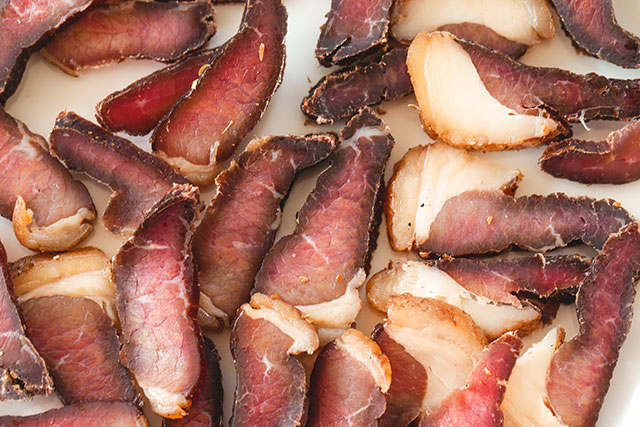This year’s winter is now long gone, and the summer heat has blossomed into its full, sweltering glory.
Not the ideal weather for making biltong; whether it is game, beef or fish biltong; if you want to make biltong the traditional way, heat is your biltong’s enemy.
Biltong is a staple Namibian food, so much so that people used to refer to our national rugby team as the ‘Biltongboere’.
Biltong is not unique but it is one of many traditional dishes across the world based on curing and dehydrating meat (or other proteins) in order to preserve and add flavour to them.
The practice is very old as humans have likely been curing meat ever since they discovered the magic of salt.
These days, such dishes are often classified under the French term charcuterie – which includes a number of preservation and flavouring techniques such as smoking, fermenting, drying and curing.
Dried food, including fish and meat, was part of the ships’ rations that brought the first settlers to colonies outside Europe. Settlers came into contact with the local inhabitants who also, without a doubt, had been preserving excess food by smoking curing or drying it.
Biltong as we know it today developed among the livestock farmers in South Africa shortly after the arrival of the first European settlers. It is likely that these farmers followed a meat-centered diet as meat, unlike other food stuffs, was freely available to them.
If wheat flour was available, freshly baked bread was a popular addition to the meal.
Askoek, a type of free-formed bread baked directly over or in the hot coals and ashes, stems from these very times.
The first usage of the word ‘biltong’ dates to the early 1700s and most likely refers to the muscles (billen en tongen) in the legs of animals from which the biltong was made.
Biltong is the ideal padkos. It weighs next to nothing and lasts a long time which means biltong and long-distance travel became synonymous.
From the very beginning venison and beef were the meat of choice for making biltong.
Although cuts of sheep were dried (often the ribs) these were not referred to as biltong. Traditionally biltong was salted and wrapped inside the freshly slaughtered animal’s hide for a day or two to develop a brine and to cure the meat before hanging.
Tasal or tasalle was a product similar to biltong – thin strips of meat, usually lamb or mutton or pork, spiced and dried and taken along as padkos on long road trips. Unlike biltong, tasalle was soaked in water before being grilled over an open fire.
The name most likely comes from the Portuegese tassalho, a reference to salted meat. Among Afrikaans speakers it was also known as toutjiesvleis.
Biltong is as popular today as it was back then. It is sold just about everywhere and is available throughout the year. It is still synonymous with long distance travel.
Biltong these days is still made predominantly from cuts of venison and beef and just like in the old days, it is the leg muscles that are most popular. Beef biltong is praised if it contains a good proportion of fat.
There are as many biltong recipes as there are biltong makers and many keep their recipes secret. Most recipes will contain at least salt, pepper, roasted coriander seeds, vinegar and nutmeg, with special curing salts such as saltpetre, chili flakes and sugar as optional ingredients.
Biltong is a very versatile, yet under-explored ingredient. It is mostly eaten as is, or on bread with good butter as tradition demands, but its applications go far beyond that of traditional dried meat.
It is used in pasta and salads and pies, added to bread dough to prepare biltong-flavoured bread, savoury beskuit and biscuits, and when bone-dry and ground finely, makes a distinctive meat-based seasoning for a variety of dishes including pancakes, scrambled eggs and creamy potato dishes and leafy salads.
1 kilogramme meat, cut from the rump or silverside muscle
20 grammes salt
7 grammes brown sugar
1 gramme salpetre
½ gramme black pepper
4 grammes coriander (whole)
Stay informed with The Namibian – your source for credible journalism. Get in-depth reporting and opinions for
only N$85 a month. Invest in journalism, invest in democracy –
Subscribe Now!






